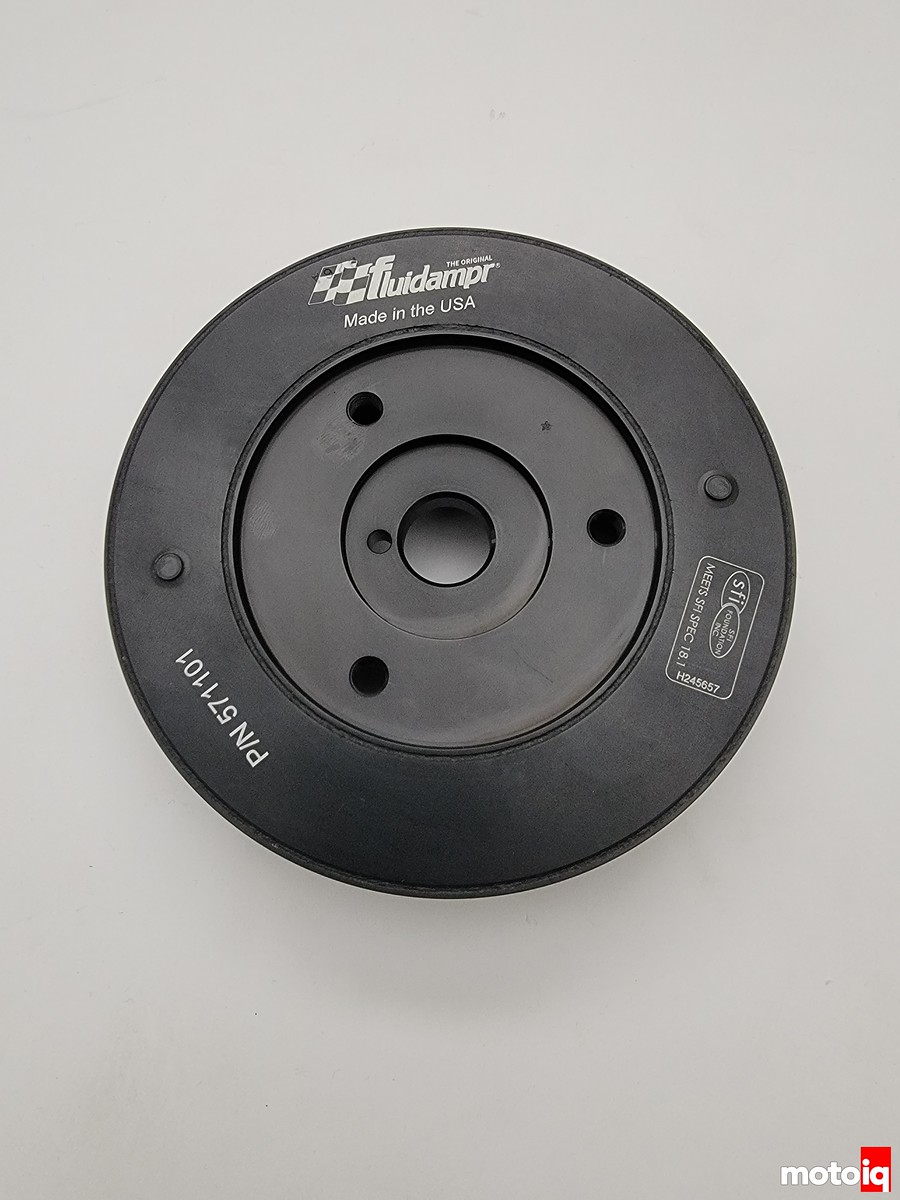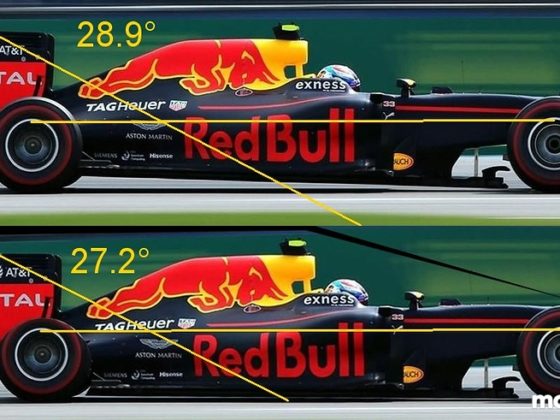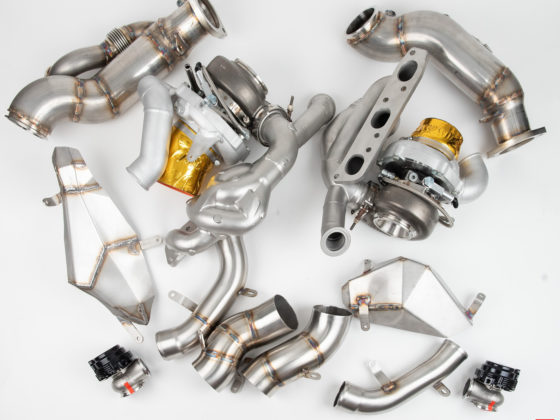
Here is the dyno chart from our previous test of the Fluidampr on an FR-S. The Fluidampr was good for 2-3 hp over the stock pulley. However, our supercharged car vibrated worse than a stock car so the gains could possibly be more.

Back at the track, our car felt a lot smoother, in fact, it was hard to feel the vibrations at 6000-6500 that previously worried us. The reduction of torsional vibrations in our engine has to help the life of the front-end accessories and the supercharger as well as the engine. Going down the front straight and back straights at Willow Springs the driver reported that she needed to shift into 5th gear noticeably sooner which indicates more power as well.
If we were able to feel significant gains in this mildly modified car, one with more power is going to really take advantage of the Fluidampr’s vibration absorbing properties and enjoy both smoother operation and longer life.
Sources
Fluidampr




8 comments
Is it worth putting one of these on a 4g63 from an evo 8/9?
We have one on ours!
I have had one on my Evo IX for a year now.
These are one of those upgrades that’s actually beneficial to your car. I installed a Fluidampr on my 2013 FR-S and it really smoothed out the revs overall and gave the engine a smoother feel. Definitely worth doing.
Did it actually get rid of the 6500rpm vibration that the driver felt? The plots don’t look like there’s a huge amount of torsional vibration at 6500rpm, certainly not a peak.
I wonder if it could be supercharger mounting stiffness. Look at how much structure there is on anything front end accessory drive related from the factory. A water pump or alternator has a relatively huge amount of webbing/structure in the block to stop it from vibrating. 2EO at 6500rpm is 216Hz, trying to give something heavy a higher than 216Hz natural frequency is tricky, and a heavy supercharger is likely to need a HUGE amount of mounting stiffness to get above that. By way of comparison, even OEM cast aluminium inline 4 manifolds can struggle to get a high enough natural frequency even though they’re only supporting themselves and a relatively light throttle body. Obviously this flat 4 one is helped by the fact it isn’t cantilevered, but it’s still a lot of stiffness that is required.
Yes you can see it on the plot!
Do these style dampers deal well with the quick changes in RPM? For instance when you go in with two feet for a panic stop or a rev-matched down shift?
That’s a very good question, we have used these for years in very high power drift motors that see a huge rpm variation very quickly and they work well.